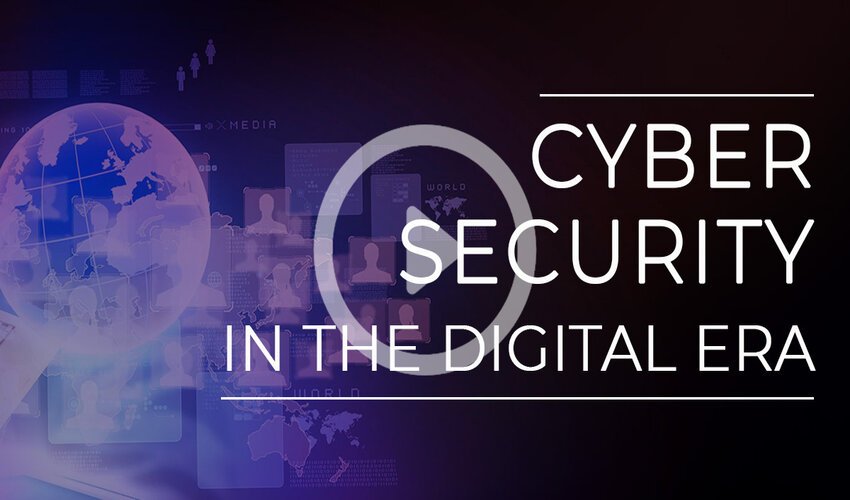Last updated on July 28th, 2025 at 06:17 am
The way we think about and feel about the world has changed as a result of digitalization. Digital-first business models are being considered by businesses as a way to gain a competitive advantage and fundamentally transform customer value delivery.
The risk of security has also increased exponentially as the digital footprint is being expanded on a war footing, leaving little time for planning.
As businesses continue to automate and digitalize their operations, the pandemic has also become a fertile ground for scammers and cybercriminals to spread cyber risks.
“As the world emerges from the pandemic pause, the needs and expectations of the business change, too,” states Gartner. After the crisis, the company will have new business goals that require IT to learn new skills and adapt to new technology roles.
The progress toward digitalization is greatly accelerated by the rapid adoption of new technologies like artificial intelligence (AI), machine learning (ML), the internet of things (IoT), automated botnets, and cloud computing. This is very important for the cyber security testing companies.
On the other hand, it is adding dynamic cybersecurity difficulties for businesses. Have we considered the risks to emerging platforms and solutions like software bots and smart devices? This is one of the questions they should ask themselves.
Cyber hazards resulting from cutting-edge technology and remedies
Enterprise cyber risk management already presents a significant leadership challenge.
Emerging technology platforms and solutions come with inherent and hidden cyber risks.
“One common misconception is that going digital is about implementing a set of technologies that get you to a digital outcome,” says Paul Chapman, CIO of Box. Furthermore, this is not the case at all. Although technology facilitates a set of outcomes, you will miss the desired end state unless you really consider how to rewrite your software rather than your business.
The cyber risk landscape is being bolstered by emerging technologies combined with new types of malware like crypto mining software and automated phishing tools.
To protect themselves from the attack, businesses must constantly review their cybersecurity measures. Many turn to services like IT Support San Jose to help manage these threats through proactive monitoring, system updates, and expert guidance.
Leaders in business are constantly devising strategies to maximize the value of their technology holdings while simultaneously safeguarding their businesses from cyberattacks. In this landscape, IT services in Bakersfield offer a structured way to unify security oversight, network reliability, and long-term infrastructure planning without expanding internal teams.
What actions should business executives take to safeguard their companies against cyberattacks?
Chief Information Security Officers (CISOs) and other business leaders have had to consider how to assess threats related to emerging technologies and platforms while protecting their vibrant digital assets takes precedence.
Gartner says, “Unprecedented security risk is created by digital business transformation and emerging cyber-physical systems.” Numerous businesses respond by adopting novel approaches to cybersecurity. In order to address the needs of new cyber-physical systems (CPS), converged IT, OT, Internet of Things (IoT), and physical security, 75% of organizations will restructure risk and security governance by 2023, up from less than 15% today. This is of immense significance for cyber security testing companies.
The following are a few tips that business leaders can use to protect their businesses from cyberattacks from the most reliable research reports:
• Understand key business priorities, identify goals, set objectives, and build a business case
• Map security controls to a regulated security framework and define them in accordance with business strategies.
• Use Privacy-Enhancing Computation (PEC) techniques to safeguard data used to enable secure data processing even in hostile settings.
• Come up with a strategy for carrying out vulnerability and penetration testing and creating a framework for prioritizing risks.
• Establish specialized cyber-savvy committees under the direction of a CISO that focus on all enterprise cybersecurity requirements.
• Establish a critical incident response capability and a breach response strategy, and through governance, maintain accountability and assurance.
While it is essential to meet rapidly changing customer expectations, businesses must be aware of how to maintain order in the face of evolving cybersecurity models like agile development and cloud computing.
The Significance of Cyber security In Cloud Computing and Agile Development
Security professionals are fundamentally adaptable to the diverse cyber threat ecology, so it is practically possible that they would thrive in an environment that promotes flexibility, an Agile core value.
Cloud computing and agile development are now the norm for any business that wants to go digital.
The most popular combination for many businesses is agile development driven by cloud computing to quickly achieve security and quality.
The good news is that cybersecurity continues to advance annually, says Forbes Technology Council Member Bob Bruns, CISO of Avanade. Companies should not be concerned about compromising their security by switching to agile development methods. Instead, they should make sure to take advantage of the cloud’s security and cost savings, correctly categorize their data, consider security at every stage of design, test the security incident mitigation process, and conduct practice attacks.
Utilizing the cloud, which provides high levels of security and enables businesses to attain superior assurance in the face of the digital world in which cybersecurity is ingrained in the majority of businesses, is essential.
After the pandemic, many businesses have moved to the cloud, allowing their employees to work from home, and businesses have eventually grown weary of the security risks associated with cloud remote access.
The best security practices and IT compliance with cybersecurity are the responsibility of the business.
Allowing IT obedience with cybersecurity
From a security perspective, the majority of the battle is won by enabling IT compliance with cybersecurity.
Understanding that there is no standard approach to compliance management is essential because cybersecurity regulations are industry-specific.
“Establishing an effective cybersecurity program is a major challenge for companies regardless of industry and geography,” says a Deloitte study. Businesses that conduct business on a global scale, on the other hand, face a far greater obstacle because they are required to abide by the rules set by a number of different authorities and jurisdictions. Even though many businesses already have programs in place to deal with cybersecurity risks, businesses should figure out how to create an efficient and effective control framework for global compliance once formal regulations are established in different jurisdictions.
To help manage those risks, businesses must develop a comprehensive risk assessment plan and establish security controls like network firewalls, data encryption, an incident response plan, a patch management schedule, and network access control.
They must also constantly update all cybersecurity policies and procedures.
Businesses must develop a framework that adheres to IT compliance and minimises cybersecurity risk in order to streamline business processes and create an environment that is ready for digital business.
By adopting a holistic approach to governance and risk management procedures, businesses can optimize business processes and save business leaders time and energy, thereby establishing a solid foundation for digital businesses.

Aimee Garcia is a Marketing Consultant and Technical Writer at DailyTechTime. She has 5+ years of experience in Digital Marketing. She has worked with different IT companies.



